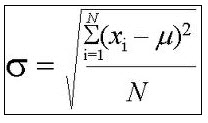Power Calculator – Testing for One Mean
Instructions: This power calculator computes, showing all the steps, the probability of making a type II error (\(\beta\)) and the statistical power (\(1-\beta\)) when testing for a one population mean. You need to provide the significance level (\(\alpha\)), the sample size (\(n\)), the effect size (\(d\)) and the type of tail (left-tailed, right-tailed or two-tailed). If you don't know the exact value of the effect size, choose between small, medium or large effect size in the form below:
More About this Statistical Power Calculator
This power calculator allows you to compute the statistical power when you know the significance level (\(\alpha\)), the sample size (\(n\)), the effect size (\(d\)) and the type of tail (left-tailed, right-tailed or two-tailed). This usually referred to a Post-Hoc Power calculation or an observed Power calculation .
Typically, the most difficult information to get is the effect size, defined as Cohen's d. If you don't have the actual value of \(d\), you can approximate it by categorizing it into one of three categories: small, medium and large effect size.
One way of estimating a magnitude of the effect size, if not available directly, is to use meta-analysis. This technique consists in analyzing many studies on similar phenomena, and get an "average" of the effect size obtained in those studies. This is the way of getting some kind of ecological average effect size . This process will lead likely to a very rough estimate, which often times is better than nothing.



